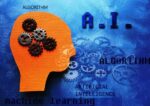
Trusts and Estates attorneys play an important role in helping their clients transfer assets through such vehicles as trust agreements, wills, business structures, and power of attorney.
In most cases the disposition of an estate moves along smoothly, especially when a qualified attorney plans and executes the process. However, this is not always the case. When a beneficiary (or hopeful beneficiary) raises concerns about lost or altered documents, or believes that the trustor has been unjustifiably influenced in some manner, expert assistance may be necessary to resolve the matter.
From medical and psychological examiners to document and computer forensics analysts, experts can prove pivotal for answering important questions about the timing, sequence, and authorship of key documents.
Consider the following situations, which reflect the kind of investigations DisputeSoft’s experts may be called upon to carry out:
– A retired attorney chooses to prepare and revise his own trust instrument. The word processing document exists on his personal computer, making the revision process simple to complete. After making edits to three pages of his trust document, he reprints and replaces only those specific pages in the printed trust instrument. However, the printer he uses to make these revisions is slightly different from the prior model he used to print his original trust instrument. Because of the inconsistency in the document with regard to its margins, ink, and type of paper, a disenfranchised beneficiary brings suit, claiming document alteration by the successor beneficiaries.
By examining the internal metadata in the document file, a computer forensics analyst can show that all of the pages in the document, including the revised pages, were created from the same word processing file, and that the latest modifications to the file were made well before the date of the trustor’s death. The date of the modifications can then be checked against the printed trust instrument’s new signature date and notary certifications.
-A potential heir brings suit when his late father leaves substantial property to a co-worker who had assisted the deceased in handling business and personal matters. By performing a liberal examination of the office computer produced by the plaintiff, the plaintiff’s expert recovers tens of thousands of potentially relevant files and fragments, including both intact and deleted files.
In such a situation, the defendant has the right to filter this material for privilege and relevance. But this is a daunting task, as the defendant must make determinations about many files that cannot be understood by a lay person, let alone reviewed for relevance in a dispute. The defense’s computer forensics expert can help by filtering out thousands of completely irrelevant files, such as snippets of programs, help files, captured web pages, and advertisements. The defendant and his counsel are then able to make determinations about the privilege and relevance of the remaining 200 documents, spreadsheets, and e-mails in short order, and they can back up their filtering and selection processes with the certification of an expert.
In the wake of the death of a loved one, everyone hopes that the transfer of assets proceeds without a hitch. In the unfortunate event that the potential beneficiaries get caught up in a dispute, a computer forensic expert may have the skills to help determine rightful ownership.
When Computer Forensics experts have followed these principles, they will usually be successful in having their findings admitted, and their opinions as to proper inferences will generally be accepted.
Read Part One: What is Computer Forensics?
Read Part Two: The Difference between Electronic Discovery and Computer Forensics
Read Part Three: What Criminal Defense Attorneys Need to Know about Computer Forensics




